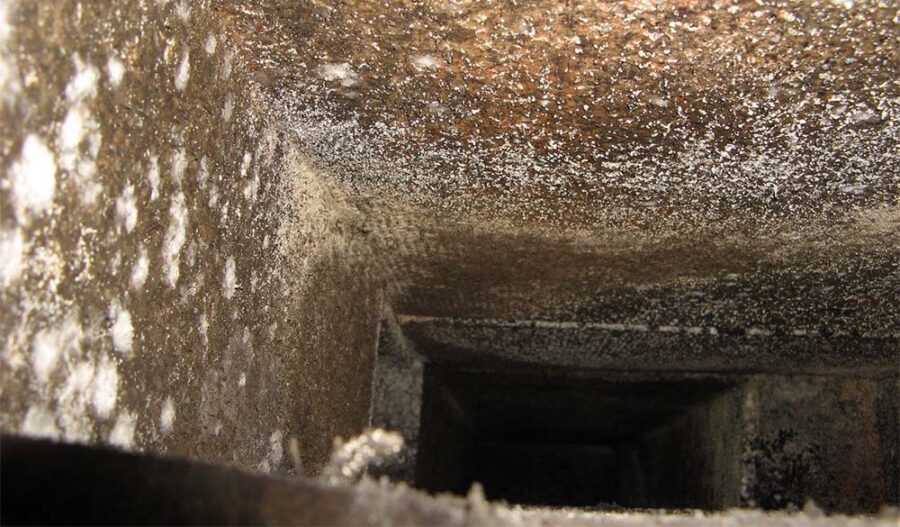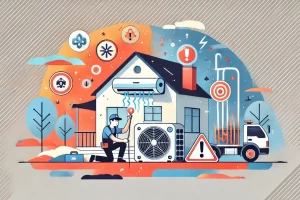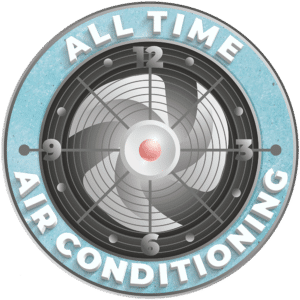How To Handle Mold In Your Air Conditioning System
Everyone knows that mold can grow in your house, and exposure to it can lead to sickness. But did you realize that mold can also grow inside of air conditioning systems, spreading through the very air you breathe? Whether you have a single air conditioning unit or a full ventilation system, hazardous mold can make itself a home and cause significant problems. Many modern homes have a full HVAC (heating, ventilation, and air conditioning) system, which makes it all the easier for mold to become a problem because once it infiltrates one system, it spreads through the ducts to everything else.
A standalone air conditioner window unit can still grow mold and blow spores into the room the unit is located in. In this scenario, since the air conditioner isn’t connected to any ducts in your home, the mold will not spread in the same way. You’ll only have one air conditioner unit and one room to worry about. But if your house has central air, the smallest bit of mold can end up spreading through the whole house.
How Does Mold Get You Sick?
Mold visibly grows on a single surface, but it also spreads invisible, microscopic spores through the air, which can then be inhaled into the body. Once mold spores enter your lungs, they can lead to a myriad of issues, from small annoyances (coughing and sneezing) to major respiratory problems (pneumonia, bronchitis, asthma attacks, and more).
Many people will also have an allergic reaction upon contact with mold. It is an extremely common allergen, so unless you’re one of the lucky few who is not allergic, expect more responses. Symptoms of an allergic reaction to mold include hives, rashes, and trouble breathing caused by swelling of the throat. Usually, these allergic reactions are relatively minor, but in some cases, they can be fatal.
The worst forms of mold actually create mycotoxins, a toxic substance that leads to even further medical issues. The most prevalent mycotoxin producer is known as Stachybotrys chartarum, or more commonly, black mold. Exposure to black mold has been tied to tons of health problems, from depression to eye infections to lung bleeding. It’s not to be taken lightly.
Mold can grow virtually anywhere in your home, and regardless of location, exposure can lead to health problems. However, mold located in air conditioning units spreads spores out into the air throughout the house, which makes it especially dangerous and especially likely to cause sickness.
How Can You Tell If Your Air Condition Has Mold In It?
It’s not uncommon for people to go a long time before finding out that their air conditioner has been spreading harmful mold spores. Your air conditioning can be making you sick, and you may not even realize it.
Mold in an air conditioning unit is usually discovered during the course of maintenance, such as when someone is replacing filters or cleaning dust and debris from the air conditioner. In these scenarios, the mold could be discovered by the owner of the home or air conditioner or by a professional HVAC technician.
One way to watch out for mold is through scent. If there’s a musty or stale smell whenever you turn on your air conditioning unit, it may point toward mold being present somewhere.
You may also want to look for mold if you experience any sicknesses or other symptoms that could be connected to mold. Look through the list of symptoms and problems discussed above for some examples of what to look out for.
If you suspect that your air conditioning unit may contain mold, you should begin by checking whatever parts of the unit are visible or otherwise easy to access, including the evaporator coils and filter. However, take note that these parts being clean doesn’t necessarily mean that you’re free of mold. Ducts, ventilation shafts, and other less easily visible areas may hide mold.
The best way to be absolutely sure about whether or not you have a mold problem is to hire a professional to run individual tests in your home. In addition to confirming whether the mold is a problem, experts can return to the house after you’ve performed removal to retest and help make sure that you’re in the clear. If you’re looking for a professional to help you test for mold in your house, try to find individuals or companies who follow standards such as those created by the American Conference of Governmental Industrial Hygienists or the American Industrial Hygiene Association.
How Can You Get Rid Of Mold In Air Conditioning Systems?
If you’re using a standalone air conditioning unit in your window and discover mold in it, the solution is relatively simple, if a little spendy: Throw it out and buy a new one. Things are a bit more complicated if you have central air. Merely replacing the air conditioner in your central air system is not enough, as it’s entirely possible and even likely that mold has already spread through the HVAC ducts connected to the air conditioner by the time that mold has been discovered.
Your best bet with a central air system connected to HVAC is to contact a professional and let them remove the mold. Such a complicated job requires special tools in order to ensure that it’s done thoroughly and that the air conditioning and ventilation systems are not damaged.
The Environmental Protection Agency (EPA) recommends making sure that you choose an individual or professional who sticks with the NADCA (National Air Duct Cleaners Association) standards when finding someone to help you remove mold from your home’s air conditioning unit. Do your research to find someone who complies with those standards and has a history of reliable, high-quality work. Be sure to have a third party retest your HVAC system for mold after the job is done to ensure that whoever you hired did a thorough job; if mold remains, any licensed professional should return and finish the job for no additional cost.










4 Comments
Leave your reply.